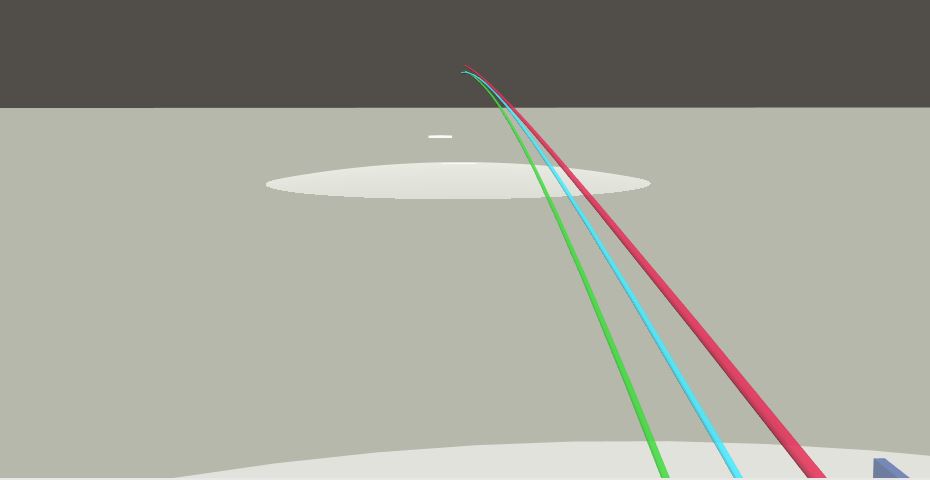A Plan for Helping Hunter Wood’s Fastball
Pitch movement isn’t as exciting as high velocity these days, especially when talking about four-seam fastballs. The harder you throw, the more attention you draw, and any additional cut, run/ride, or rise you produce is the icing on the cake. So what happens if you throw a fastball with average velocity and minimal movement?
There are a few pitchers who don’t rely on heavy movement and can compensate for unimpressive velocity with things like pitch command or control and being able to use their offspeed and/or breaking pitches with the fastball effectively. While looking at some 2019 four-seam movement data, I came across a few pitchers that produce minimal four-seam action. Since the fastball is essentially the foundation on which all other pitches thrive, I wondered about the capacity of their other secondary pitches working off of this somewhat linear-moving pitch.
I found Cleveland Indians relief pitcher Hunter Wood to be of interest to me. Only a half-win player in 2018, Wood took a small step backward in 2019 after a decent start to the season that went south just before the All-Star break. His HR/9 skyrocketed in that time, going from 0.68 from April to June to 2.84 in July and August, and his fastball was largely responsible for the degradation.
Eventually, Wood was dealt to the Indians in late July after spending his two and a half seasons with the Tampa Bay Rays. Per Wood’s scouting report, he possesses a good level of command. His pitches generally grade out as average, with exception given to his cutter.
Wood’s undeviating four-seamer averages a horizontal break of three-quarters of an inch with the tenth-highest rise of all fastballs thrown in 2019. Given the lack of expected drop to the pitch, hitters generated a fair number of fly balls, a lot of which left the various stadiums they were hit in. Thrown for league-average velocity with the 43rd-highest spin rate, it produced a .280 batting average and a 120 wRC+ against. Below are a couple of his typical fastballs:
Having such little movement otherwise can get you into trouble, as it has for Wood. Furthermore, throwing league-average velocity would mean that most hitters are going to be keyed in around that speed, especially with how often Wood has gone to his. Knowing that the pitch will not deviate from the ascertained trajectory, you’re essentially throwing batting practice if a hitter is sitting on the four-seam.
Another reason Wood’s fastball gets hit much more than average four-seamers could be due to either his underperforming secondary pitches or his sequencing in general. The former is more likely the cause. Consider another pitcher who throws a pretty straight four-seamer that is uncannily like Wood’s: Clayton Kershaw.
| Pitcher, | Velocity | Spin Rate | pfx_x | pfx_z | h_brk | v_brk | plate_x | plate_z |
|---|---|---|---|---|---|---|---|---|
| Clayton Kershaw | 90.3 | 2477 | -0.65 | 10.51 | -1.18 | 19.44 | -0.07 | 2.59 |
| Hunter Wood | 93.6 | 2492 | -0.75 | 10.71 | -1.38 | 19.93 | 0.22 | 2.76 |
With the exception of the velocity difference, we are essentially looking at identical pitches. However, Kershaw has been much more efficient when using his fastball.
| Pitcher | wFA/C | w/FC/C | wCH/C | wSL/C | wCU/C |
|---|---|---|---|---|---|
| Clayton Kershaw | 1.23 | – | – | 1.34 | 0.36 |
| Hunter Wood | 0.09 | 0.10 | 0.47 | – | 1.00 |
As you can see, Kershaw has much more effective secondary pitches, which help make his fastball better (which he also uses much less than Wood). Kershaw also appears to vary his pitch usage a bit more, and Wood could take a cue from that.
So what can Wood do in order to make his four-seamer less vulnerable in 2019? We’ll run on the premise that Wood will not make any changes to his four-seamer and that he’ll continue to use the pitch as much as he has, historically.
As for his supporting pitches, Wood uses a cutter that he’ll throw to righties more often, his changeup is exclusively for lefties, and he drops in his curveball pretty evenly to both, though mainly when ahead of the count. And that’s where I identify the need for adaptation.
Wood’s curveball, a pitch he scaled back on in 2019 and only used during the last three months of the season, should be implemented more. However, the pitch isn’t without some issues that are correctable.
Wood produces something of a “bunny hop” on his curveball, which when paired with his relatively straight-forward four-seamer, pops out of a potential tunnel between the two pitches. Here we can see what appears to be a tight tunnel to White Sox hitter Daniel Palka, but looking at the BP Matchup Tool chart, you can clearly see the early hop that disrupts the sequence.
Here’s another example of Wood using his curve with the four-seam. We have a closer tunnel initially, but it breaks off a bit early, both vertically and horizontally, prior to the commit point.
Wood wants to find some sort of middle-ground between these two sequences. Both curveballs were thrown with the same velocity, same spin axis, and with around a 20 rpm difference In the first example, we have a curve that hops out of the tunnel early, yet both pitches separate perfectly at the commit point. With the second example, there is less-noticeable hop, but the curve breaks out of the tunnel much earlier.
Here we can see both curveballs superimposed using the Baseball Savant Statcast 3D Pitch Visualizer. The top curveball is from the first gif and the bottom is from the second gif. The top curve is released about six inches earlier than the bottom curve. With that early release point, the curve comes out of the hand sooner (5.5 feet) and has more of an upward trajectory, creating the aforementioned “bunny hop.” The second curve is released about a half a foot later and has much more of a level shape through the recognition (100 ms after release) and commit (167 ms before reaching home) points. The bottom curve is much better suited for Wood’s stationary four-seam fastball in order to create a tunnel.

There is a small caveat; this particular example is much more effective against right-handed hitters because, from a lefties’ perspective, the curveball (blue line) will break out of the fastball (red line) tunnel much earlier due to its additional horizontal movement. Have a look, first from the RHH perspective:

And now the LHH:

You can see a significant difference in the way that these pitches form their shape, which is dependent on the viewing angle of the hitter. I’ve talked before about the importance of understanding hitter’s vantage points, and this is a perfect example.
Why does all that matter? Let’s use an example from Wood’s teammate, Mike Clevinger. The gif below shows Clevinger throwing a curveball to the hitter, though before the pitch breaks, right around the commit point, we are shown how having a four-seam fastball along the same trajectory can throw hitters for a loop.
The hitter (potentially) expects a second fastball in the pitch sequence. He appears to adjust, but by the time he does, it’s too late; the curve has already begun its sharp downward trajectory.
Wood’s four-seamer has little life, and bringing back his curveball, while being aware of how the two can properly interact, can make him a better pitcher out of the bullpen. He’s been able to keep the four-seam elevated for the most part, but he’ll need to lift it a tad more because of the potential for extra hop on the curve.
The lynchpin to all of this is Wood tweaking his curveball release by letting go around the six-foot extension point in his thowing motion. Understanding certain aspects of your pitches, such as the shape created at certain release points, helps incite additional deception. Wood’s command grades out at a 55/60, so he could hopefully make these adjustments with little trouble.
Pitching strategist. Driveline Baseball pitch design-certified. Systems Administrator for a high school by day, I also provide ESPN with pitching visuals and am the site manager for SB Nation's Bucs Dugout.

This whole article could be summed up by saying that if he throws his curve ball a little earlier it would look like a fastball to the batter a tad longer which will cause more swing and misses which will make him a better reliever than he currently is. Maybe I’m missing something.
Well, there’s a little bit more to it than that but I’ll take the TL;DR!